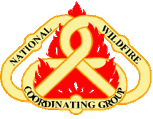U.S. Forest Service
Region 5 Pacific Southwest Region
COVID-19 Workplace Cleaning and Disinfecting
Briefing Paper
Dated: 03/23/2020
Issue:
Region 5 employee working in community “High Touch” environments as defined by CDC during
operations associated with COVID-19 mission critical response.
Background:
There is much to learn about the novel coronavirus that causes coronavirus disease 2019 (COVID-
19). Based on what is currently known about the novel coronavirus and similar coronaviruses that
cause SARS and MERS, spread from person-to-person with these viruses happens most frequently
among close contacts (within about 6 feet). This type of transmission occurs via respiratory droplets.
On the other hand, transmission of novel coronavirus to persons from surfaces contaminated with the
virus has not been documented. Transmission of coronavirus occurs much more commonly through
respiratory droplets than through fomites. Current evidence suggests that novel coronavirus may
remain viable for hours to days on surfaces made from a variety of materials. Cleaning of visibly dirty
surfaces followed by disinfection is a best practice measure for prevention of COVID-19 and other
viral respiratory illnesses in households and community settings.
Mitigation Direction:
These guidelines are focused on household settings and are meant for the general public.
¿ Cleaning refers to the removal of germs, dirt, and impurities from surfaces. Cleaning does not
kill germs, but by removing them, it lowers their numbers and the risk of spreading infection.
¿ Disinfecting refers to using chemicals to kill germs on surfaces. This process does not
necessarily clean dirty surfaces or remove germs, but by killing germs on a surface after
cleaning, it can further lower the risk of spreading infection.
Employees can practice routine cleaning of frequently touched surfaces (for example “High Touch”
areas such as: tables, doorknobs, light switches, handles, desks, toilets, faucets, sinks, phones,
radios) with household cleaners and EPA-registered disinfectants that are appropriate for the surface,
following label instructions. These supplies include tissues, paper towels, cleaners and EPAregistered
disinfectants (examples at this link pdf iconexternal icon). Labels contain instructions for
safe and effective use of the cleaning product including precautions you should take when applying
the product, such as wearing gloves and making sure you have good ventilation during use of the
product.
Clean and disinfect high-touch surfaces daily in community space areas (e.g. tables, hard-backed chairs, doorknobs, light switches, remotes, handles, desks, toilets, sinks, phones, radios)
How to clean and disinfect:
Surfaces
¿ Wear disposable gloves when cleaning and disinfecting surfaces. Gloves should be discarded after each cleaning. If reusable gloves are used, those gloves should be dedicated for cleaning and disinfection of surfaces for COVID-19 and should not be used for other purposes. Consult the manufacturer’s instructions for cleaning and disinfection products used. Clean hands immediately after gloves are removed.
¿ If surfaces are dirty, they should be cleaned using a detergent or soap and water prior to disinfection.
¿ For disinfection, diluted household bleach solutions, alcohol solutions with at least 70% alcohol, and most common EPA-registered household disinfectants should be effective. Wipe down surfaces in a one way direction until entire surface has been disinfected.
o Diluted household bleach solutions can be used if appropriate for the surface. Follow manufacturer’s instructions for application and proper ventilation. Check to ensure the product is not past its expiration date. Never mix household bleach with ammonia or any other cleanser. Unexpired household bleach will be effective against coronaviruses when properly diluted.
¿ Prepare a bleach solution by mixing:
¿ 5 tablespoons (1/3rd cup) bleach per gallon of water or
¿ 4 teaspoons bleach per quart of water
¿ For soft (porous) surfaces such as carpeted floor, rugs, and drapes, remove visible contamination if present and clean with appropriate cleaners indicated for use on these surfaces. After cleaning:
o Launder items as appropriate in accordance with the manufacturer’s instructions. If possible, launder items using the warmest appropriate water setting for the items and dry items completely
Clothing, towels, linens and other items that go in the laundry
¿ Wear disposable gloves when handling dirty laundry. If using reusable gloves, those gloves should be dedicated for cleaning and disinfection of surfaces for COVID-19 and should not be used for other household purposes. Clean hands immediately after gloves are removed.
o If no gloves are used when handling dirty laundry, be sure to wash hands afterwards.
o If possible, do not shake dirty laundry. This will minimize the possibility of dispersing virus through the air.
o Launder items as appropriate in accordance with the manufacturer’s instructions. If possible, launder items using the warmest appropriate water setting for the items and dry items completely. Dirty laundry from an ill person can be washed with other people’s items.
Hand hygiene and other preventive measures:
¿ Employees should clean hands often, including immediately after removing gloves and after contact with an ill person, by washing hands with soap and water for 20 seconds. If soap and water are not available and hands are not visibly dirty, an alcohol-based hand sanitizer that contains at least 60% alcohol may be used. However, if hands are visibly dirty, always wash hands with soap and water.
¿ Employees should follow normal preventive actions while at work and home including recommended hand hygiene and avoiding touching eyes, nose, or mouth with unwashed hands.
o Additional key times to clean hands include:
¿ After blowing one’s nose, coughing, or sneezing
¿ After using the restroom
¿ Before eating or preparing food
¿ After contact with animals or pets
¿ Before and after providing routine care for another person who needs assistance (e.g. a child) |



